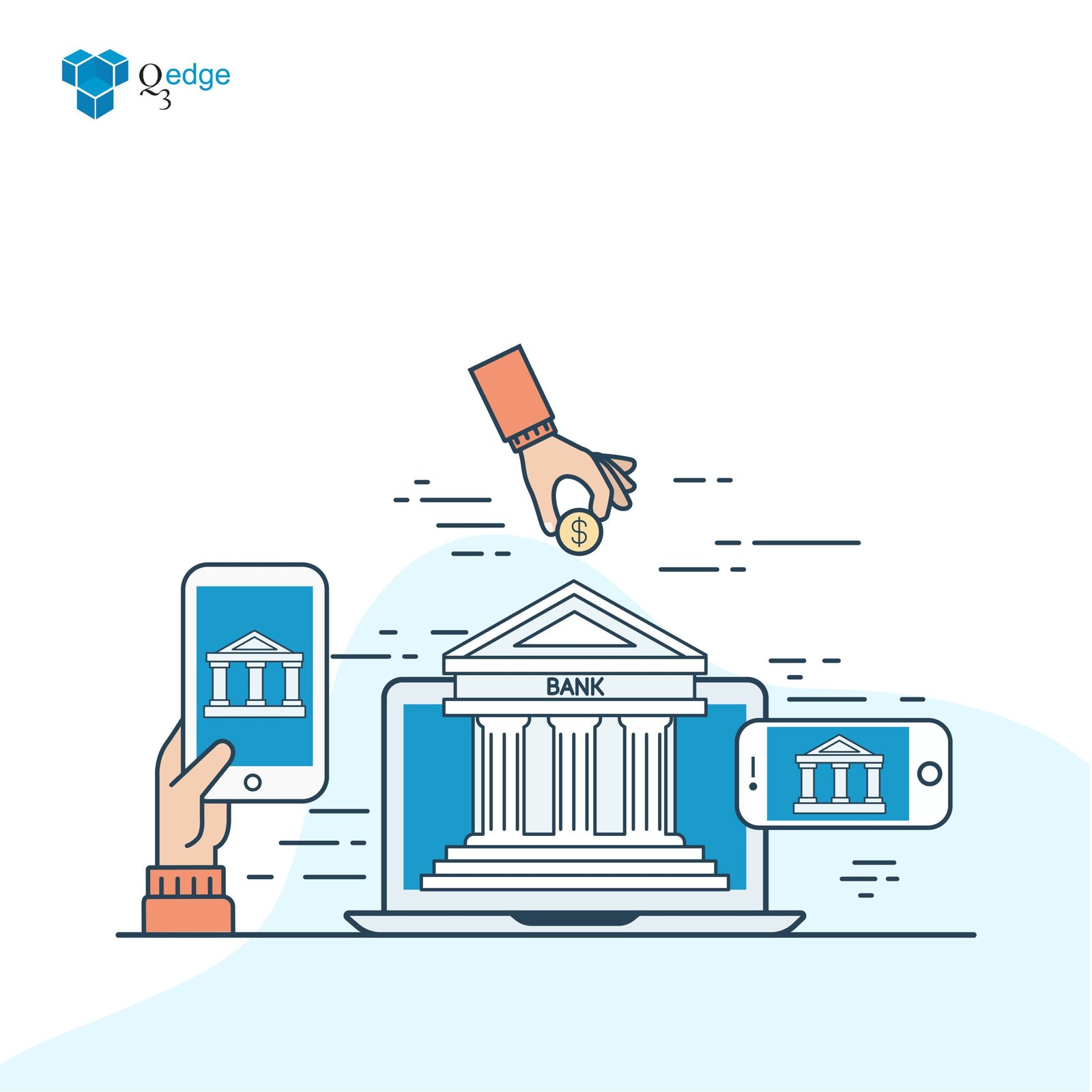Why is it essential for financial institutions to offer digital business models and excellent customer service?

“Go Digital” is a trendy slogan resonating all around the world. For most sectors, it has been a cakewalk to adopt digital transformation. However, for financial institutions, the process is slow.
With the world advancing faster toward digitalization, it is high time for financial institutions to adopt digital business models. Today with technological advancements and continuous innovation, the finance sector can provide extraordinary customer service by embracing digital transformation. Traditional banking systems were focused on manual performance. But with digital transformation, banks can eliminate all the repetitive and unwanted tasks and concentrate on a customer-centric approach. The idea of digital transformation is to satisfy customers and provide them with digital financial services that are reliable, accessible, and affordable.
The concept of digital models in financial institutions can take the finance sector from the ground level to greater heights as it has many benefits. The traditional financial services lacked ease and accessibility for the customers making it a tedious task for them. With digital solutions and services, the finance world is gearing up to provide excellent customer service. Also, the pressure from different market components forces financial institutions to rise to the occasion.

Today the world has changed significantly, which has led to changes in the customer’s mindset and expectations. It is high time that financial institutions acknowledge the change and adopt digital transformation.
Digital Business Models in Financial Institutions
Digital Business Models are modern concepts that differ from traditional banking or financial services models. They are primarily digital. Their incorporation will help engage more customers, provide value, improve customer service, and generate more revenue. One of the best examples of digital models in banks is Digital Banking, which uses customers’ data to provide personalized services, increasing customer engagement and revenue.
The different types of digital models that financial institutions can use are:
Digital-Only Banks
- These banks offer banking services mainly via digital platforms.
- They are known for their high-quality self-service experiences.
- These banks provide financial services to customers at much lower operating costs than traditional banks.
- Their primary targets are tech-savvy customers and small businesses.
- However, they also begin with narrower segments and gradually expand their reach to other groups.
- They provide mobile-first services with online banking options.
- They also provide digital customer service using chatbots with minimal human support.
- Here are some examples of global financial institutions offering this digital-only bank model. They are- Kakao Bank, Marcus by Goldman Sachs, Liv By Emirates NBD, Digibank, etc.
Digital Financial Advisors:
- It is more of a private banking experience which is primarily digital.
- They offer digital financial advisors to a broader customer base.
- It is a model that thrives on the customer’s data.
- This digital business models is highly accessible to customers and runs via AI algorithms.
- These algorithms help in understanding a customer’s financial situation.
- It also helps in providing them with highly personalized and apt financial advice.
- The Digital Financial Advisors model is a replacement for the traditional relationship manager.
- This model is a hybrid variety of traditional human and digital chatbot technology to provide high-quality customer service.
Finance Marketplaces
- The Finance Marketplace business model provides an open environment for the customers to choose their preferred financial services from various third-party suppliers.
- This model is different from the traditional marketplace because it is entirely digital, and customers can access them via other apps, websites, APIs, developer portals, etc.
- Due to this digital model, open banking and open data became significant in the finance industry.
- These digital finance marketplaces are very convenient and accessible for customers as they can find the best financial products and services.
- Some of the best examples of digital finance marketplaces are Paisabazaar and BankBazaar—Raisin.

Non-Finance Marketplaces
- The non-finance marketplaces are one of the best digital business models.
- Financial institutions like Paytm, DBS Bank, etc., lead these non-finance marketplaces.
- These marketplaces provide an open environment for customers to choose non-financial products and services from different finance suppliers.
- The best example of a non-finance marketplace is DBS Marketplace, a one-stop portal for browsing property listings and cars, booking travel flights, booking hotels, and comparing utility providers.
Transform your operations, achieve your goals
with our expert BPM consulting.
Banking as a Service (BaaS)
- Banking as a Service is a digital model by banks that offer full-fledged banking processes across all their financial products, like transactions, deposits, loans, payments, etc., to the third-party applications or marketplaces they can use in their products or services.
- BaaS involves integrating financial products into the primary journeys of the customers, like getting instant auto loans at the dealer site.
- The delivery of BaaS happens via well-defined APIs and business partnerships.
- The BaaS model is gaining popularity globally. Banks at national and international levels, like BBVA, Goldman Sachs, Sutton Bank, ICICI Bank, and SolarisBank, build their business using this digital business model.
- Moreover, BaaS intermediaries like Galileo, Marqeta, and Setu are also gaining popularity.
Banking Industry Utilities
- It is a type of business model that specializes in providing non-differentiating services using resources, expertise, and capabilities to increase the efficiencies of all financial institutions.
- The Banking Industry Utilities provide a combination of data, technology, and operations for serving the customer via BPaaS- Business Platform as a Service.
- One of the best examples of this model is ClearBank by Stater, UK’s new clearing bank. It is the largest mortgage service provider in Benelux. Their services include 1.7 million mortgage and insurance loans for about 50 financial institutions in the Netherlands and Belgium.
Banking Curators
- The banking curators’ digital business model is a recent development that most new-age banks are adopting.
- The model involves combining the primary accounts of the customers with third-party products and financial advisors.
- The idea of the model is to provide a personalized combination of financial products to customers on a single platform.
- The best examples of banking curators are- Starling Bank, N26, and Monzo.
Embedded Finance
- The business model of embedded finance includes embedding banking with non-financial services and products.
- The concept may seem abrupt, but it has recently gained popularity.
- Several retailers, e-commerce companies, digital technology firms, etc., are adopting the embedded finance business model.
- It is a great way to engage and provide excellent financial service to customers.
- The best example of this model is the BNPL (Buy Now, Pay Later) concept. It provides credit financial products to customers in association with banks.
- Another great example is Shopify, which offers merchants the BNPL business debit card.
Advantages of Digital Business Models
Digital Business Models are the future of the finance industry. These models have several benefits, and some of them are:
- The digital model enables customers to enjoy banking services from their homes. Customer convenience is one of the significant benefits of Digital Banking in India.
- The digital model allows users to avail of banking services round the clock, with 24*7 access to digital banks.
- The digital model has become paperless, a tribute to the environment. Customers can log into their accounts at any time to monitor records.
- The digital model lets users set up automatic payments for regular utility bills such as electricity, gas, phone, and credit cards. It also allows customers to enjoy the feature of reminders about bill payment dates and alerts on due payments.
- With the Digital model, you can do online shopping instantly without any hassle for payments and transactions.
- The digital model has extended its services to remote areas in India. With smartphones at affordable prices and internet access in remote areas, the penetration of digital banking among the rural population has become significantly higher.

- Digital fund transfers reduce the risk of counterfeit currency.
- With the help of digital models, a user can easily report and block misplaced credit cards online. Hence, it speaks about privacy and security while digital banking in India.
- The digital model promotes cashless banking and restricts the circulation of black money as the Government can keep track of fund movements.
- Digital models can lower the minting demands of a currency in the future.
Importance of Customer Service in Financial Institutions
Customer Service is the most critical aspect of every industry. However, when it comes to financial institutions, it plays the most crucial role. The finance and banking sector works entirely on customer support. Hence, it is essential to provide satisfactory customer service so they always choose you for their financial needs.
The traditional banking methods and finance models have permanently reduced customer service quality, which created pressure on the finance sector. However, after the entry of digitalization into this world, the adoption of digital business models in financial institutions has improved the quality of customer services in this industry.
The importance of customer service in the banking industry is due to the following factors:
- The rising customer demands and expectations are a huge factor in increasing customer service’s importance. Today the majority of the population uses smartphones and is knowledgeable. Hence, they want high quality and faster service compared to traditional times.
- The immense technological growth attracts customers to different types of applications and software. Hence, it is crucial to provide good customer service to keep the customer engaged with your product or services.
- Today people know the value of customer service. They are looking for high-quality service, increasing competition between different financial institutions.
- The population today is loaded with millennials who are learned and intelligent. They know the value of customer service. Hence, it’s time for financial institutions to rise and provide high-quality customer service.
Here are some of the ways how you can improve your customer service using digital business models:
- With technological advancement today, you can monitor end-to-end customer journeys and provide them with personalized products and services.
- Most users have very little knowledge about finance, so you can provide real-time support using Live Chats or other similar tools.
- Customizations and Personalizations are the best way to provide high-quality customer service to people.
- Leveraging the modern Banking Chatbot is a great idea to connect with your customers and provide them service at all times.
- Providing a single platform to the customers for all their banking needs is a great way to serve your customers. So an omnichannel experience is the way to go.
- Another excellent method to boost customer service is to conduct training on intrapersonal skills.
- Creating a knowledge-based self-help service is a great way to guide your users with the new advancements in your portal.
- Customer feedback is one of the most important channels that gives you better opportunities to serve people.
- Providing a beautiful Digital experience to your customers will improve customer service in many ways.
- Using contextual data is another great way to serve customers and provide them with a customized experience.
Relationship between Digital Business Models and Customer Service
The relationship between digital business models and customer service is directly proportional. The quality of customer service increases with the adoption of digital models in financial institutions. Here are some of the reasons why digital models have a positive impact on customer service in the finance sector:
- Faster Service
- In this age of the internet, everyone wants things quickly. No one has the patience to transfer money to others’ bank accounts by waiting in a massive line at banks.
- The digital models in financial institutions use high-end technology and other modern techniques to provide faster banking service to customers.
- Hence, these digital models offer faster customer service.
- High-Quality Service
- The difference between manual and digital methods lies in the quality of the product.
- To Err is Human is a very common proverb, and it’s true.
- Unlike traditional manual services, digital models use technology that minimizes the chances of error.
- Hence, digital models have a positive impact on customer service.
- Accessibility
- If you remember the traditional banking system, it was the most inaccessible business model.
- However, with the advent of digital models, the accessibility of financial services and products have increased significantly.
- Hence, these models have a positive impact on the customer service.

- Affordability
- If you think digital business models are expensive, you’re mistaken.
- These models do not have any extra operational cost; hence financial institutions can provide these services without charging additional commissions to the customers.
- Hence, it helps improve the quality of customer service.
- Security
- The rise of cyber threats is a huge concern for all financial institutions.
- However, digital models have a well-encrypted design according to industry standards using various tools and software.
- Providing a fast financial service using digital models improves the quality of customer service.
Customer Feedback is an essential aspect of digital models that most financial institutions must use. It is crucial to understand the customer’s point of view from their standpoint, which can only happen via customer feedback.
You may be thinking that AI and Cloud Computing technology already collects customers’ data for personalization, then how is customer feedback relevant? The answer is that even though AI captures customers’ data, it is primarily technical. Still, customer feedback can help understand the real issue they face while using your product or services. By taking customer feedback, you’re providing a human touch in the whole system, which is primarily digital.
Hence, customer feedback is crucial; you must take feedback to provide and personalize your products. It will also help with customer engagement and retention.
Example of Customer Service in Banking
A Virginia-based Navy Federal Credit Union Bank serves military veterans and their families. They have a slogan: “Once a member, always a member.” So they offered self-service channels with 24/7 customer support and freeing their member service representatives to do more value-added work on behalf of their members. This initiative doubled the self-service applications.
Conclusion
In this fast-paced world, traditional banking and financial service concepts are non-functional. Every sector or institution wants to provide high-quality service and generate maximum revenue. However, with ancient business models, the above things are impossible. Hence, adopting digital business models in financial institutions is crucial.
The digital models have a design that suits the customer’s needs and expectations. They help provide high-quality and faster customer service without increasing the organization’s operational costs. In a world filled with gadgets and smartphones, it is ideal to opt for digitalization to attract maximum customers and generate higher revenue. Digital models can also help with constant innovation, enhanced security, and exceptional customer service. The tedious and slow finance world can quickly start running with these digital models. It not only provides benefits on a personal level but on a national and global level; it will increase financial awareness, penetration, and inclusion, especially in developing and underdeveloped countries.
You May Also Like,
1. How to accomplish Business Process Documentation?
2. What is Business Process Design, Steps and Importance ?
3. Missing Process Innovation: The End of Road for Blockbuster
4. Business Process Services: Definition, Benefits, and Types
5. Continuous Process Improvement (CPI): Definition, Methodology, Techniques, and Benefits
6. Business Process Governance and its Importance: Complete Guide
Take Action Now and Make a Difference
Feel Free To Contact Us for Further Information




